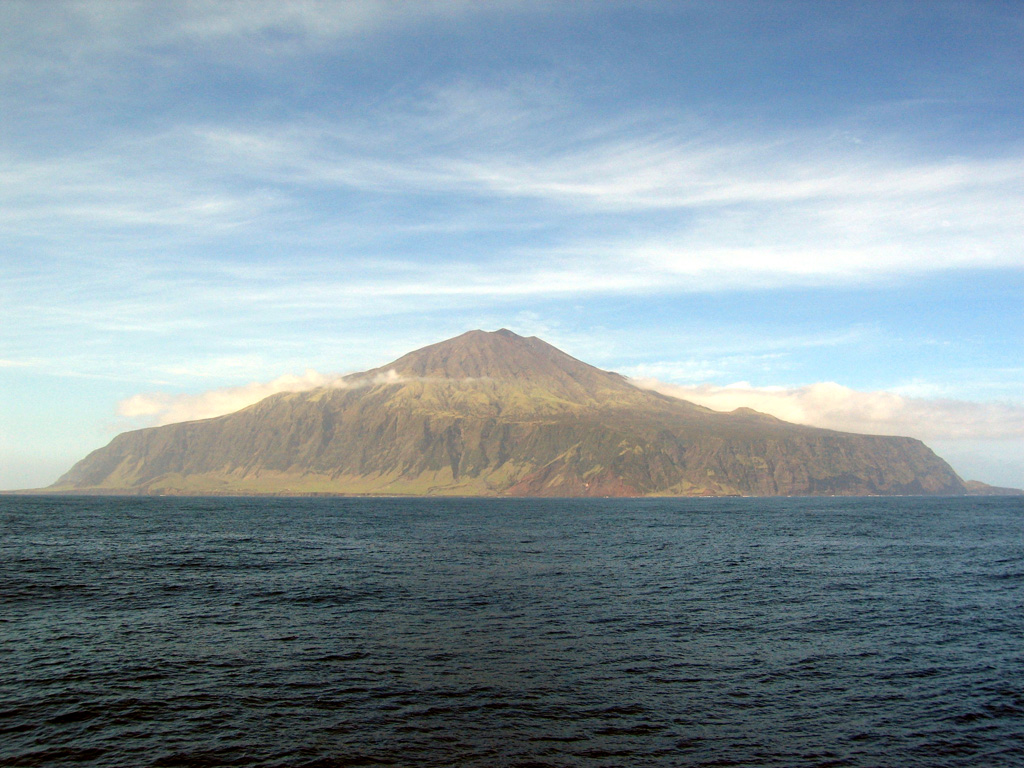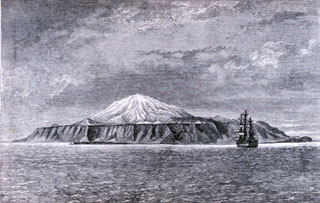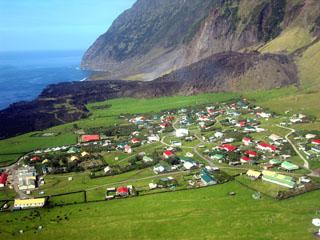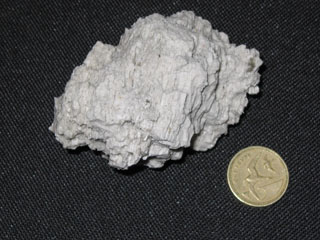

The Global Volcanism Program has no activity reports for Tristan da Cunha.
The Global Volcanism Program has no Weekly Reports available for Tristan da Cunha.
The Global Volcanism Program has no Bulletin Reports available for Tristan da Cunha.
This compilation of synonyms and subsidiary features may not be comprehensive. Features are organized into four major categories: Cones, Craters, Domes, and Thermal Features. Synonyms of features appear indented below the primary name. In some cases additional feature type, elevation, or location details are provided.
Cones |
||||
| Feature Name | Feature Type | Elevation | Latitude | Longitude |
| Big Green Hill | Pyroclastic cone | |||
| Burnthill | Pyroclastic cone | |||
| Cave Gulch Hill | Pyroclastic cone | |||
| Hill Piece | Tuff cone | |||
| Kipuka Hill | Pyroclastic cone | |||
| Nellie's Hump | Pyroclastic cone | |||
| Olaf | Cone | |||
| Queen Mary | Pyroclastic cone | 2060 m | 37° 5' 28" S | 12° 17' 0" W |
| Stony Beach Hills | Pyroclastic cone | |||
| Stony Hill Group | Pyroclastic cone | |||
Domes |
||||
| Feature Name | Feature Type | Elevation | Latitude | Longitude |
| Stony Hill | Dome | |||
|
|
||||||||||||||||||||||||||
There is data available for 2 confirmed Holocene eruptive periods.
1961 Oct 10 - 1962 Mar 15 Confirmed Eruption Max VEI: 2
| Episode 1 | Eruption Episode | North flank | ||||||||||||||||||||||||||||||||||||||||||||||||||||||
|---|---|---|---|---|---|---|---|---|---|---|---|---|---|---|---|---|---|---|---|---|---|---|---|---|---|---|---|---|---|---|---|---|---|---|---|---|---|---|---|---|---|---|---|---|---|---|---|---|---|---|---|---|---|---|---|
| 1961 Oct 10 - 1962 Mar 15 | Evidence from Observations: Reported | ||||||||||||||||||||||||||||||||||||||||||||||||||||||
|
List of 9 Events for Episode 1 at North flank
| |||||||||||||||||||||||||||||||||||||||||||||||||||||||
1700 ± 50 years Confirmed Eruption
| Episode 1 | Eruption Episode | South flank | |||||||||||||||||||
|---|---|---|---|---|---|---|---|---|---|---|---|---|---|---|---|---|---|---|---|---|
| 1700 ± 50 years - Unknown | Evidence from Correlation: Tephrochronology | |||||||||||||||||||
|
List of 2 Events for Episode 1 at South flank
| ||||||||||||||||||||
There is no Deformation History data available for Tristan da Cunha.
There is no Emissions History data available for Tristan da Cunha.
 The HMS Challenger lies off Tristan da Cunha island in this 1878 plate from "The Voyage of the Challenger." This converted military vessel was outfitted for scientific surveys and circumnavigated the globe over 3.5 years. The island can be seen to comprise a tall central volcano rising above steep coastal cliffs that truncate lava flows. Pyroclastic cones are shown on the flanks.
The HMS Challenger lies off Tristan da Cunha island in this 1878 plate from "The Voyage of the Challenger." This converted military vessel was outfitted for scientific surveys and circumnavigated the globe over 3.5 years. The island can be seen to comprise a tall central volcano rising above steep coastal cliffs that truncate lava flows. Pyroclastic cones are shown on the flanks.  The southwest side of Tristan da Cunha volcano rises above the southern Atlantic ocean. The summit cone Queen Mary’s Peak towers above high cliffs along most of the 12-km-wide island. Lava flows dominate both the low-angle base and the steep upper flanks, although pyroclastic cones ringing the central cone are scattered around the lower flanks. An eruption in 1961 occurred from a vent on the northern coast, just east of the island's only settlement, Edinburgh of the Seven Seas, forcing its evacuation.
The southwest side of Tristan da Cunha volcano rises above the southern Atlantic ocean. The summit cone Queen Mary’s Peak towers above high cliffs along most of the 12-km-wide island. Lava flows dominate both the low-angle base and the steep upper flanks, although pyroclastic cones ringing the central cone are scattered around the lower flanks. An eruption in 1961 occurred from a vent on the northern coast, just east of the island's only settlement, Edinburgh of the Seven Seas, forcing its evacuation.  A lava flow on Tristan da Cunha extends approximately 700 m to the sea from a small lava dome formed during the eruption of 1961-1962. The flow is seen here from the SW with the island's only habited area, the village of Edinburgh of the Seven Seas, in the foreground. The eruption began on 10 October 1961 and prompted the evacuation of the island's entire population to England. The eruption ended on 15 March 1962, and resettlement began in September of that year.
A lava flow on Tristan da Cunha extends approximately 700 m to the sea from a small lava dome formed during the eruption of 1961-1962. The flow is seen here from the SW with the island's only habited area, the village of Edinburgh of the Seven Seas, in the foreground. The eruption began on 10 October 1961 and prompted the evacuation of the island's entire population to England. The eruption ended on 15 March 1962, and resettlement began in September of that year. This pumice block, with a one-pound coin for scale (diameter ~24 mm), was collected from the ocean surface near Tristan da Cunha on 3 August 2004. An earthquake swarm lasting 6 hours beginning on 29 July was felt on the island and followed by observations of large blocks of floating pumice.
This pumice block, with a one-pound coin for scale (diameter ~24 mm), was collected from the ocean surface near Tristan da Cunha on 3 August 2004. An earthquake swarm lasting 6 hours beginning on 29 July was felt on the island and followed by observations of large blocks of floating pumice.The Global Volcanism Program has no maps available for Tristan da Cunha.
The following 7 samples associated with this volcano can be found in the Smithsonian's NMNH Department of Mineral Sciences collections, and may be availble for research (contact the Rock and Ore Collections Manager). Catalog number links will open a window with more information.
| Catalog Number | Sample Description | Lava Source | Collection Date |
|---|---|---|---|
| NMNH 110014 | Trachyandesite | -- | -- |
| NMNH 110015 | Trachyandesite | -- | -- |
| NMNH 110016 | Trachyandesite | -- | -- |
| NMNH 110017 | Olivine Basalt | -- | -- |
| NMNH 110018 | Olivine Basalt | -- | -- |
| NMNH 110019 | Basalt | -- | -- |
| NMNH 110020 | Basalt | -- | -- |
| Copernicus Browser | The Copernicus Browser replaced the Sentinel Hub Playground browser in 2023, to provide access to Earth observation archives from the Copernicus Data Space Ecosystem, the main distribution platform for data from the EU Copernicus missions. |
| MIROVA | Middle InfraRed Observation of Volcanic Activity (MIROVA) is a near real time volcanic hot-spot detection system based on the analysis of MODIS (Moderate Resolution Imaging Spectroradiometer) data. In particular, MIROVA uses the Middle InfraRed Radiation (MIR), measured over target volcanoes, in order to detect, locate and measure the heat radiation sourced from volcanic activity. |
| MODVOLC Thermal Alerts | Using infrared satellite Moderate Resolution Imaging Spectroradiometer (MODIS) data, scientists at the Hawai'i Institute of Geophysics and Planetology, University of Hawai'i, developed an automated system called MODVOLC to map thermal hot-spots in near real time. For each MODIS image, the algorithm automatically scans each 1 km pixel within it to check for high-temperature hot-spots. When one is found the date, time, location, and intensity are recorded. MODIS looks at every square km of the Earth every 48 hours, once during the day and once during the night, and the presence of two MODIS sensors in space allows at least four hot-spot observations every two days. Each day updated global maps are compiled to display the locations of all hot spots detected in the previous 24 hours. There is a drop-down list with volcano names which allow users to 'zoom-in' and examine the distribution of hot-spots at a variety of spatial scales. |
|
WOVOdat
Single Volcano View Temporal Evolution of Unrest Side by Side Volcanoes |
WOVOdat is a database of volcanic unrest; instrumentally and visually recorded changes in seismicity, ground deformation, gas emission, and other parameters from their normal baselines. It is sponsored by the World Organization of Volcano Observatories (WOVO) and presently hosted at the Earth Observatory of Singapore.
GVMID Data on Volcano Monitoring Infrastructure The Global Volcano Monitoring Infrastructure Database GVMID, is aimed at documenting and improving capabilities of volcano monitoring from the ground and space. GVMID should provide a snapshot and baseline view of the techniques and instrumentation that are in place at various volcanoes, which can be use by volcano observatories as reference to setup new monitoring system or improving networks at a specific volcano. These data will allow identification of what monitoring gaps exist, which can be then targeted by remote sensing infrastructure and future instrument deployments. |
| Volcanic Hazard Maps | The IAVCEI Commission on Volcanic Hazards and Risk has a Volcanic Hazard Maps database designed to serve as a resource for hazard mappers (or other interested parties) to explore how common issues in hazard map development have been addressed at different volcanoes, in different countries, for different hazards, and for different intended audiences. In addition to the comprehensive, searchable Volcanic Hazard Maps Database, this website contains information about diversity of volcanic hazard maps, illustrated using examples from the database. This site is for educational purposes related to volcanic hazard maps. Hazard maps found on this website should not be used for emergency purposes. For the most recent, official hazard map for a particular volcano, please seek out the proper institutional authorities on the matter. |
| IRIS seismic stations/networks | Incorporated Research Institutions for Seismology (IRIS) Data Services map showing the location of seismic stations from all available networks (permanent or temporary) within a radius of 0.18° (about 20 km at mid-latitudes) from the given location of Tristan da Cunha. Users can customize a variety of filters and options in the left panel. Note that if there are no stations are known the map will default to show the entire world with a "No data matched request" error notice. |
| UNAVCO GPS/GNSS stations | Geodetic Data Services map from UNAVCO showing the location of GPS/GNSS stations from all available networks (permanent or temporary) within a radius of 20 km from the given location of Tristan da Cunha. Users can customize the data search based on station or network names, location, and time window. Requires Adobe Flash Player. |
| DECADE Data | The DECADE portal, still in the developmental stage, serves as an example of the proposed interoperability between The Smithsonian Institution's Global Volcanism Program, the Mapping Gas Emissions (MaGa) Database, and the EarthChem Geochemical Portal. The Deep Earth Carbon Degassing (DECADE) initiative seeks to use new and established technologies to determine accurate global fluxes of volcanic CO2 to the atmosphere, but installing CO2 monitoring networks on 20 of the world's 150 most actively degassing volcanoes. The group uses related laboratory-based studies (direct gas sampling and analysis, melt inclusions) to provide new data for direct degassing of deep earth carbon to the atmosphere. |
| Large Eruptions of Tristan da Cunha | Information about large Quaternary eruptions (VEI >= 4) is cataloged in the Large Magnitude Explosive Volcanic Eruptions (LaMEVE) database of the Volcano Global Risk Identification and Analysis Project (VOGRIPA). |
| EarthChem | EarthChem develops and maintains databases, software, and services that support the preservation, discovery, access and analysis of geochemical data, and facilitate their integration with the broad array of other available earth science parameters. EarthChem is operated by a joint team of disciplinary scientists, data scientists, data managers and information technology developers who are part of the NSF-funded data facility Integrated Earth Data Applications (IEDA). IEDA is a collaborative effort of EarthChem and the Marine Geoscience Data System (MGDS). |